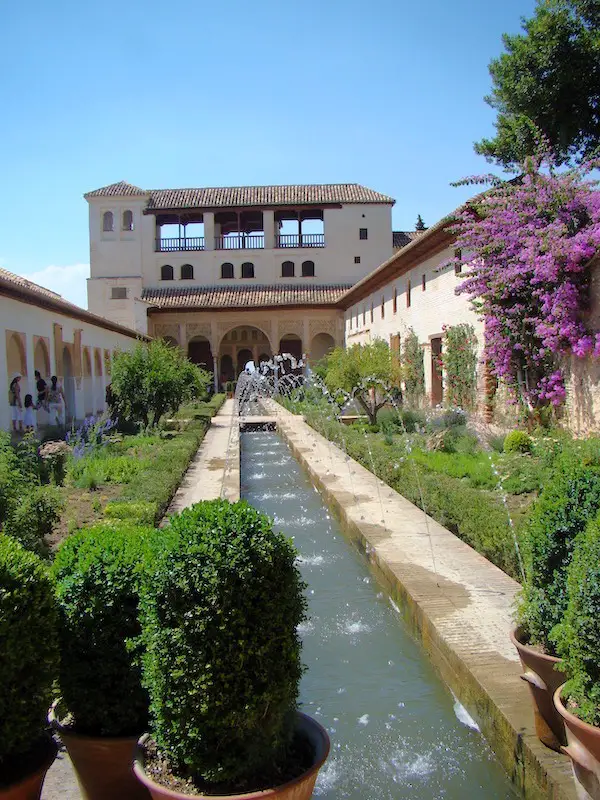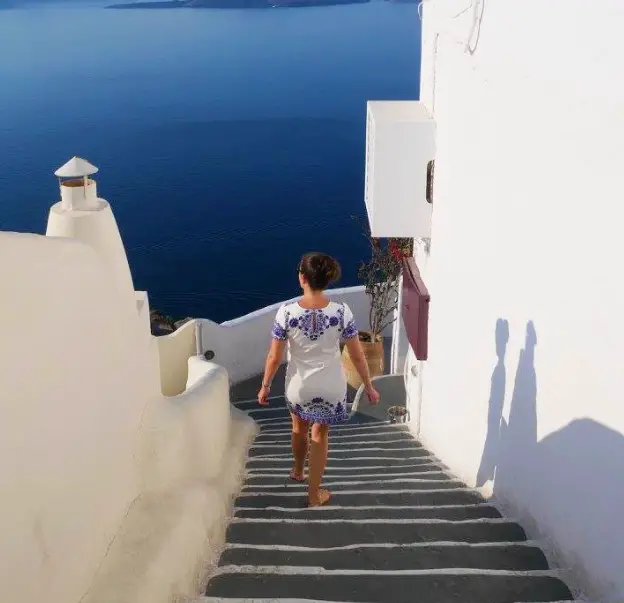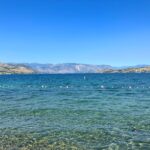Full Visit Guide for the Alhambra in Granada, Spain
Last Updated on April 10, 2024 by Kelly
One of the most spectacular things to see in all of Spain is the Alhambra. The Alhambra is a Moorish palace and fortress located in the southern region of Spain. It’s the most visited attraction in Spain, so you have to add it to your list!
I’ve visited the Alhambra several times over the years, and it’s a place I never get tired of visiting. Walking through its many rooms and gardens is the perfect way to spend a day in Granada. During my last visit, it was a sweltering hot day and it was such a relief to feel the cool air in the palace.
In this post, I’m sharing my full visit guide for the Alhambra in Granada. I’m sharing my photos, how to get tickets, important facts about the Alhambra, and the best hotels near the Alhambra. My full image gallery is located at the end of this post. You’ll have everything you need to plan your own trip to see the Alhambra!
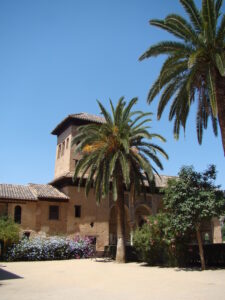
Disclosure: This post may contain affiliate links.
Ticket Information
The first thing you need to do to plan your trip to the Alhambra is to book admission tickets. You can read detailed information about booking tickets on the official Alhambra website.
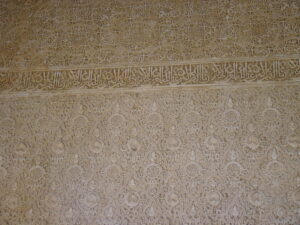
9 Tips For Purchasing Tickets
- It’s highly recommend to purchase your tickets in advance. The Alhambra is one of the most popular monuments in Spain, and there’s a large demand for tickets. You don’t want to miss out on this experience, so make sure to get your tickets prior to your arrival.
- You will be provided a time slot to visit the Nasrid Palaces on your ticket. You can only access the Nasrid Palaces during that time, so be sure not to miss it. There’s usually a long line outside of the Nasrid Palaces. Don’t be discouraged. Get in line 15-20 minutes before your scheduled time, and you should be just fine. The line actually moves pretty quickly.
- You don’t need an admission ticket to visit the Museum of the Alhambra, the Charles V Palace, or the Mosque Bath. Those locations are free to the public.
- There are different kinds of tickets you can purchase. We recommend purchasing the Alhambra General (Complete Visit). This ticket will allow you to see the Alcazaba, the Nasrid Palaces, the Partal, and the Generalife Gardens. An adult ticket costs 19.09 euros at the time of this writing.
- If you only have a limited time in Granada, you can also purchase a night ticket to the Alhambra.
- If you plan on visiting multiple monuments in Granada, consider purchasing the Dobla de Oro General. It contains the Alhambra General ticket, as well as admission to several other monuments in Granada over the course of three days.
- When you present your ticket, you will have to show your ID or passport. Don’t leave those at your hotel, or you won’t be granted admission.
- Plan on spending at least half a day at the Alhambra. During each of my visits, I spent 3 to 4 hours visiting the Alhambra.
- Large bags aren’t allowed in the main areas, so I recommend bringing a small purse or small backpack that adheres to their requirements.
You can purchase skip-the-line tickets to the Alhambra with a guided tour through Viator.
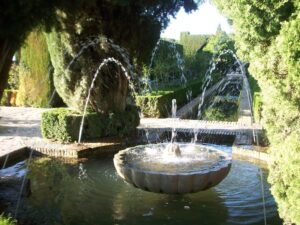
How to Get There
The Alhambra is located in the city of Granada, which is located in Southern Spain. (This region of Spain is known as Andalusia in English, or Andalucía in Spanish.)
The nearest airport to the Alhambra is Federico García Lorca Granada Airport (airport code GRX).
The Granada Railway Station is about a 3.5 kilometer (2.2 mile) walk to the Alhambra.
When we last visited the Granada, we walked from the Plaza Nueva in the city center to the Alhambra. The walk was about 20 minutes and slightly uphill. If you don’t mind being on your feet most of the day, the walk is pretty pleasant.
It’s also very convenient to take a taxi. The fare is not too expensive, and you’ll be able to start your day directly at the entrance.
Plan to do a lot of walking while you’re at the Alhambra. The Alhambra is a huge complex, and some of the attractions are located on opposite ends of each other. Wear comfortable shoes and stay hydrated!
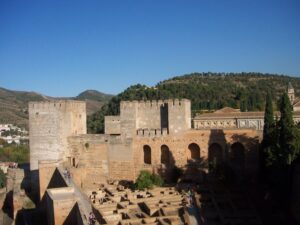
What to See at the Alhambra
Nasrid Palaces
The main thing to see at the Alhambra is the Nasrid Palaces. Absolutely do not miss your time slot to see the palace!
The Nasrid Palaces were built under the request from Muhammad V.
When you visit the Nasrid Palaces, you’ll walk through tranquil courtyards and intricately-designed rooms.
There are 3 components of the Nasrid Palaces:
- Mexuar: This is the oldest hall and it was used for formal meetings.
- Palace of Comares: This is where the king personally lived.
- Palace of the Lions: This is the main courtyard.
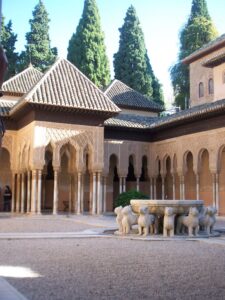
The Nasrid Palaces are famous for their Islamic architecture. In Islamic art, it’s forbidden to make images of people or nature. Instead, complex geological patterns are used to decorate walls, ceilings, and floors. In the Hall of the Ambassadors, there is a very ornate wooden ceiling.
Don’t forget to look up during your visit! The sculpting that hangs down on the ceilings is known as muqarnas. The style is sometimes called “honeycomb vaulting.”
Be sure to see our full guide of things to do in Granada!

The Nasrid Palaces were my favorite part of visiting the Alhambra. There are brilliant details everywhere you look. I took my time looking through each room. I especially enjoyed looking at the detailed carvings on the walls and ceilings.
Alcazaba
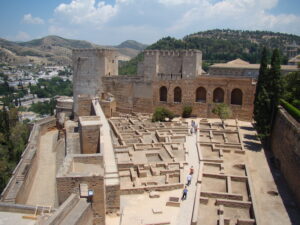
The Alcazaba has stunning views of Granada sprawling out below it. The Alcazaba is the oldest part of the Alhambra, because it was the central military fortress. (Remember the Alhambra began as a fortress before the palaces were ever built.) The Alcazaba contained houses, storehouses, and workshops. I really enjoyed taking photos at the Alcazaba with Granada in the backdrop!
Generalife Gardens
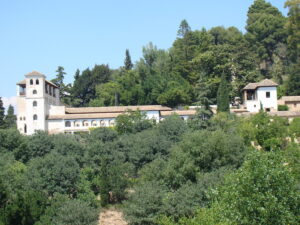
One of my favorite places in the Alhambra is the Generalife Gardens. The Generalife Palace served as a summer palace for the Nasrid rulers. The gardens contained orchards and crops, as well as ornamental gardens. The walkways are paved in a mosaic of white and dark pebbles. The name was derived from the Arabic words “Garden of the Architect.”
The Water Ladder (Escalera de Agua) is a staircase that was built in the 14th century. The staircase has running water rolling down both sides of it.
Although you’ll probably rush to the Nasrid Palaces, make sure that you leave time for the Generalife Gardens. This is one of my favorite areas in the Alhambra, and it’s nice to stroll through the gardens without feeling rushed for time.

Charles V Palace
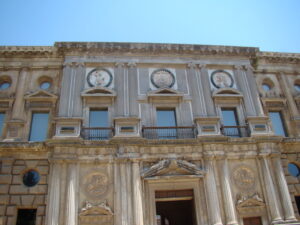
Construction for the Charles V Palace began in 1527. You’ll notice that the Catholic architecture is very different from the Islamic architecture seen in the Nasrid Palaces. Interestingly, none of the monarchs ever lived in the palace because it took so long to build it. The palace wasn’t actually completed until the 1900s.
Fountain of Charles V
While you’re by the Charles V Palace, be sure to note the Fountain of Charles V. Under the main shield, there are three heads that spout water. These three heads represent the three main rivers near Granada: the Beiro, Darro, and Genil. The fountain was completed in 1545.
Museum of the Alhambra
Located on the southern side of the Charles V Palace is the Museum of the Alhambra. Admission to the museum is free. Please note that it is closed on Mondays. Inside the museum, you’ll learn more about the Alhambra’s rich history, as well as see precious artifacts.
Fine Arts Museum of Granada
The Fine Arts Museum of Granada is located on the top floor of the Charles V Palace. Depending on your citizenship, entrance to this museum may be free or there may be a small admission fee. In this museum, you’ll be able to view notable artworks such as the Limoges enamel and the Burial of Christ.
Partal
The Palace of the Partal is one of the newer additions to the Alhambra, and it was built about a century ago. This two-floor palace stands next to a peaceful pond. The Partal contains homes, gardens, and a chapel.
Dining
After walking around the Alhambra all day, you probably have a bit of an appetite!
The only restaurant located within the Alhambra is at the Parador de Granada. We recommend booking dining reservations in advance!
You’re allowed to bring food and water into the Alhambra, so we recommend that you do pack some snacks and an insulated water bottle for your visit. Bags and backpacks aren’t allowed in the Nasrid Palaces, Generalife Gardens, or the Alcazaba, so you might have to temporarily keep them in a locker.
There are some restaurants located right outside of the Alhambra. These include: Casa Torcuato Alhambra, Restaurante Jardines Alberto, and Restaurante Garnata.
Quick Facts
- The name Alhambra is likely derived from the Arabic word al-Ḥamrāʼ, which translates to “the red one.” This is due to the red-tinged stones that make up the Alhambra.
- The walls of the fortress and palace have intricate writings carved into them. Many of the writings are from famous poems or the Quran.
- The engineers that built the Alhambra hundreds of used ago used anti-seismic techniques to protect the Alhambra against earthquakes. There are lead foils between the columns and the foundation, so the columns have never collapsed due to an earthquake. For this reason, the Alhambra is one of the best-preserved examples of Islamic architecture in Spain.
- Even with a ticket, you can be denied entry if you don’t have a government-issued ID.
- Only 300 people are allowed entrance to the Nasrid Palaces during each 30-minute interval.
- The Alhambra covers nearly 26 acres. There are 30 towers within the complex!
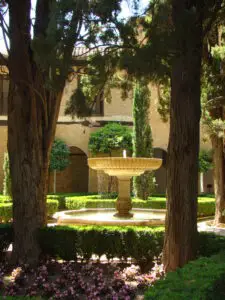
Brief History
Mohammed ben Al-Hamar (Mohammed I) was the first to live at the Alhambra. Construction for the Alhambra began in 1238 AD. Even before that, there were military fortresses along the hill overlooking Granada. Muhammed Al-Ahmar, who was the founder of the Nasrid dynasty, began to expand the fort.
Over the next two hundred years, the Alhambra continued to expand to include gardens, palaces, and more. It is especially known for its advanced water system, which allowed water to flow freely to its many gardens and fountains.
In 1492, the Alhambra was taken by the Catholics during the Reconquista. It was then stewarded by King Ferdinand II of Aragon and Queen Isabella I of Castille. This is where Christopher Columbus received official approval to sail to the Americas.
In 1526, Charles V began construction on his palace. Due to delays and lack of funding, it wasn’t completed during his lifetime.
The Alhambra slowly fell into disrepair over the next several hundred years.
During the 19th century, restoration efforts began on the Alhambra. In 1828, the architect José Contreras, was given permission by Ferdinand VII to update the Alhambra.
In 1832, the American writer Washington Irving helped to capture its fame with his writings Tales of the Alhambra.
In 1984, the Alhambra officially became a UNESCO World Heritage Site.
Today, over 3 million people visit the Alhambra annually.
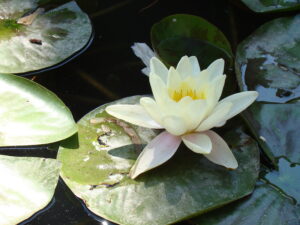
Nearby Hotels
Parador de Granada: The Parador de Granada is the only hotel located in the Alhambra itself. The hotel is housed within the first convent that was built within the Alhambra, and it still retains the older Nasrid courtyard outside its walls. There Parador de Granada has both a restaurant and a terrace for dining.
Áurea Washington Irving by Eurostars Hotel Company: The Áurea Washington Irving is located right outside the Alhambra. The hotel has a complimentary breakfast and a swimming pool.
Palacio de Santa Inés: The Palacio de Santa Inés is about a 20-minute walk from the Alhambra. This 3-star hotel has excellent views of the Alhambra.
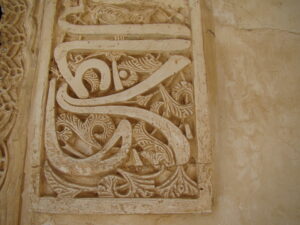
What to Bring With You
We recommend that you bring a few essential items when you visit the Alhambra. There are some areas of the Alhambra where you may need to temporarily check a larger bag or backpack.
- Because large bags aren’t allowed in all areas, we recommend a small purse or a small backpack with travel essentials. Your bag has to measure under 40cm x 40cm.
- Sunscreen
- Water
- Sunglasses
- Comfortable sandals (I’ve had my Teva sandals for years, and they have held up great!)
- Bandaids (If you get a blister, you’ll want to address it right away)
- Loose clothing
There’s no specific dress code for the Alhambra, so you’re fine wearing shorts or sleeveless shirts.
We also recommend that you visit Ronda, which is another beautiful city in Southern Spain!
More Photos of My Trip
There are so many extraordinary things to see at the Alhambra. I included this full image gallery so you can get a sense of the intricacy and beauty of the Alhambra. Enjoy!
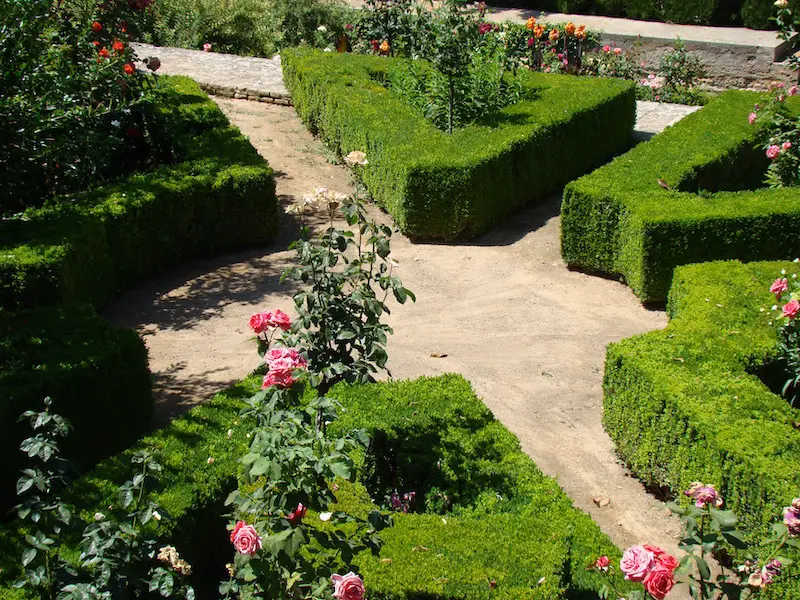
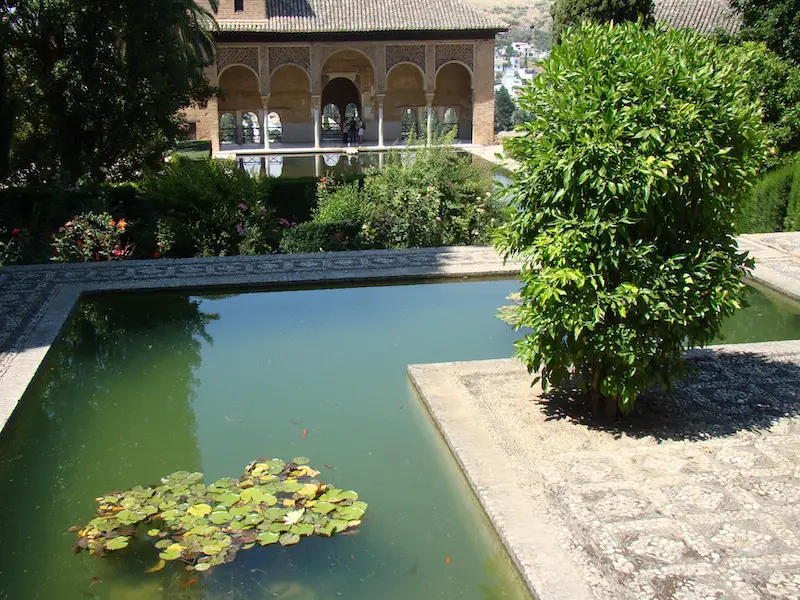

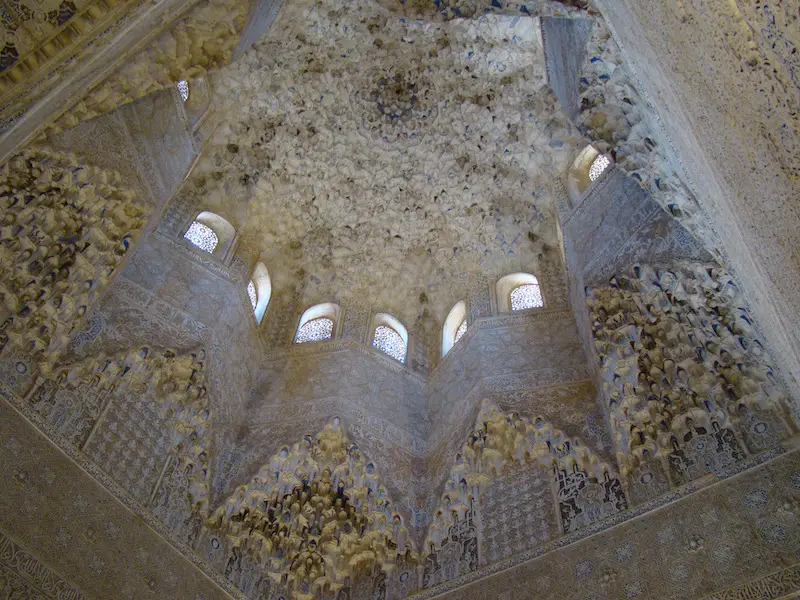
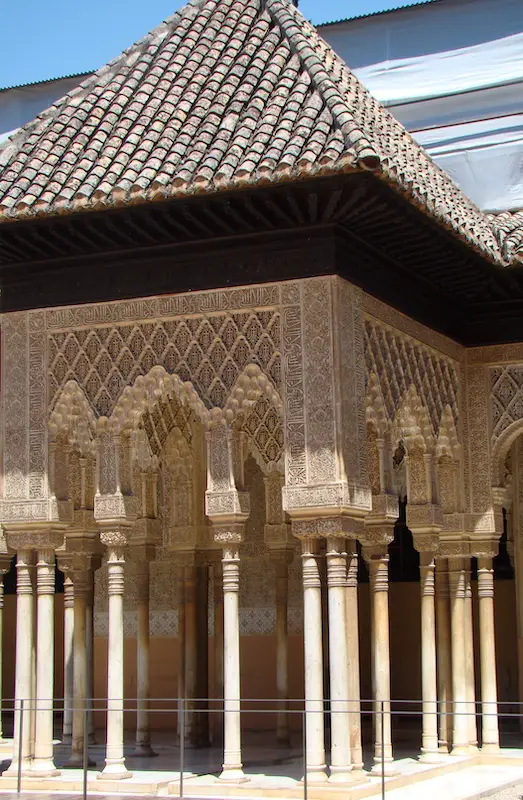
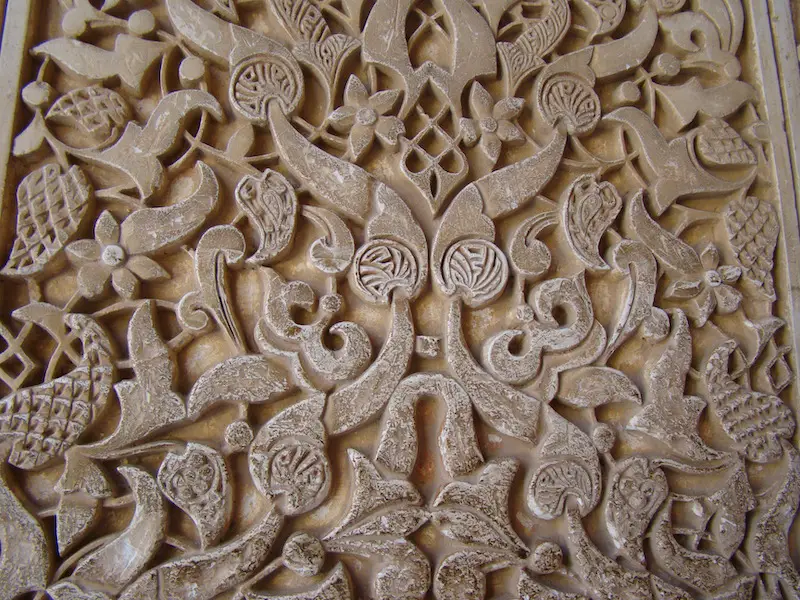
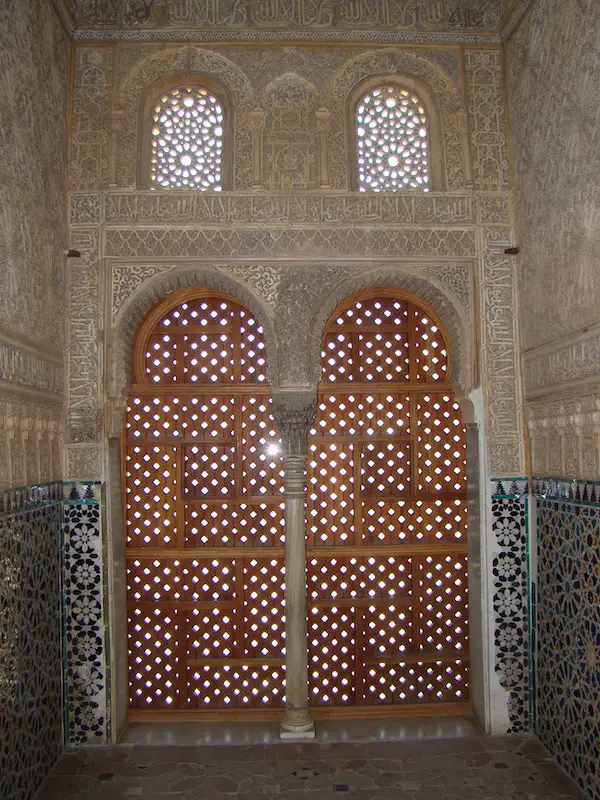
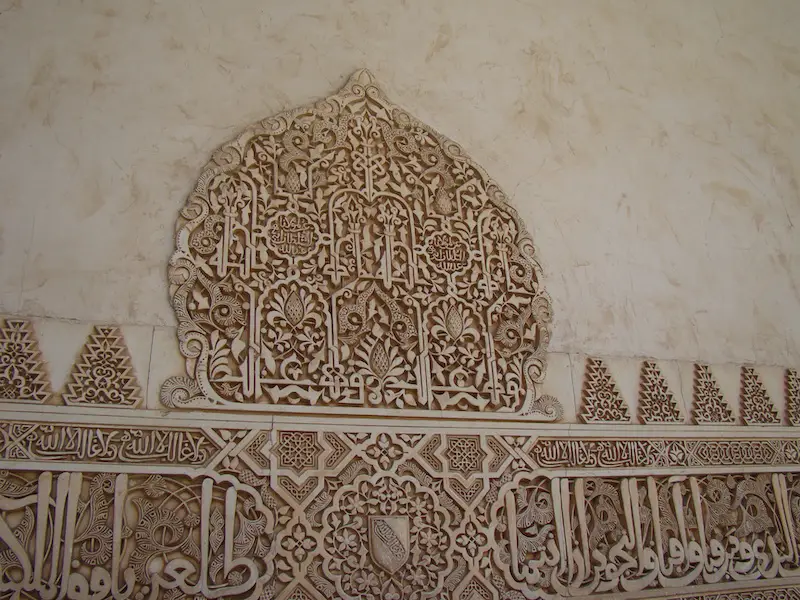
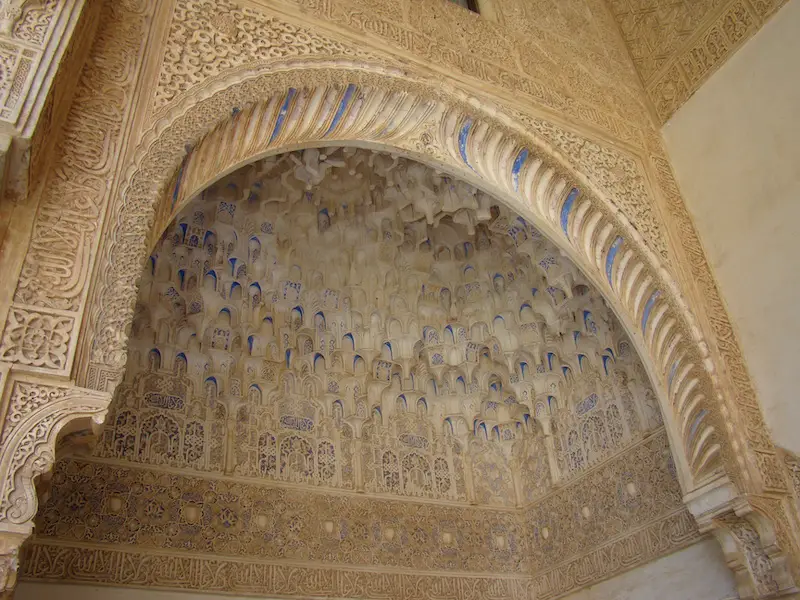
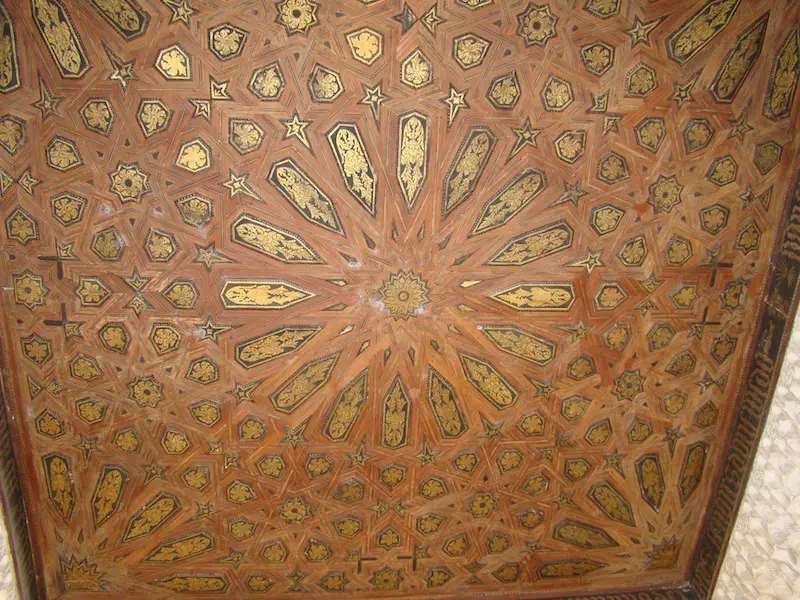
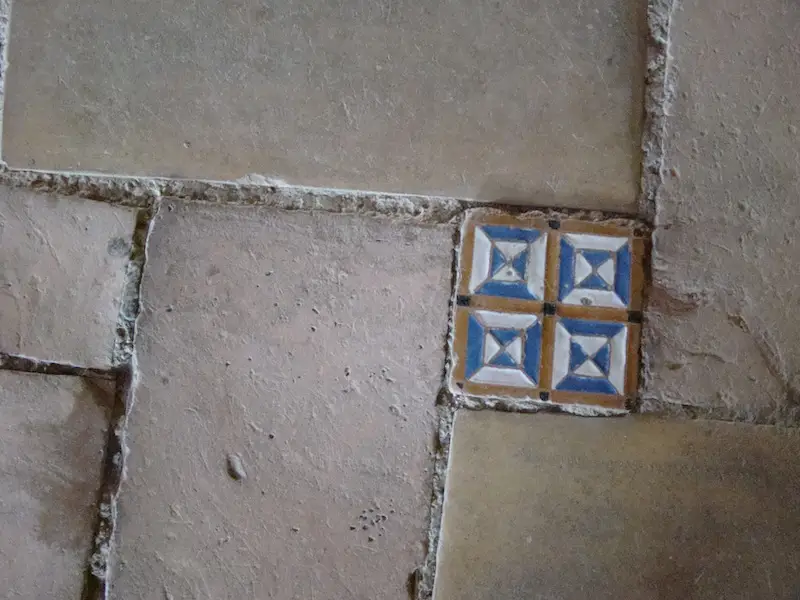
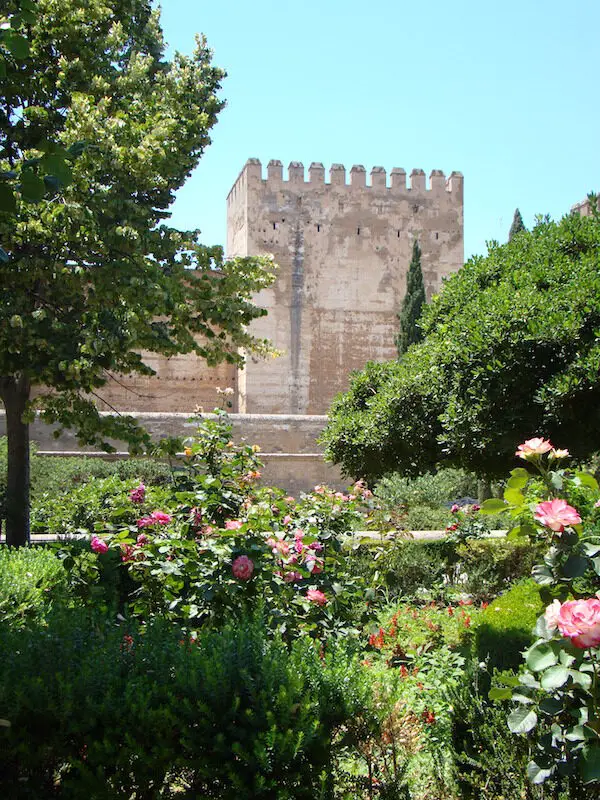
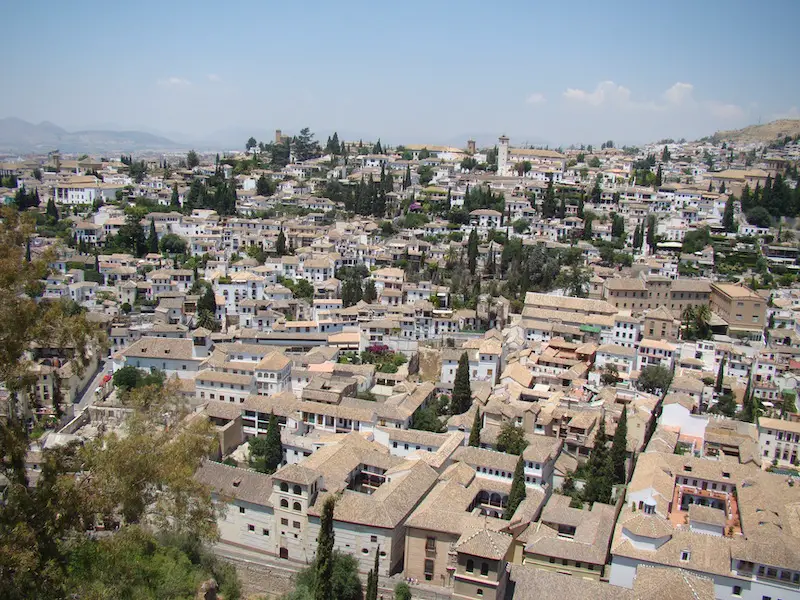

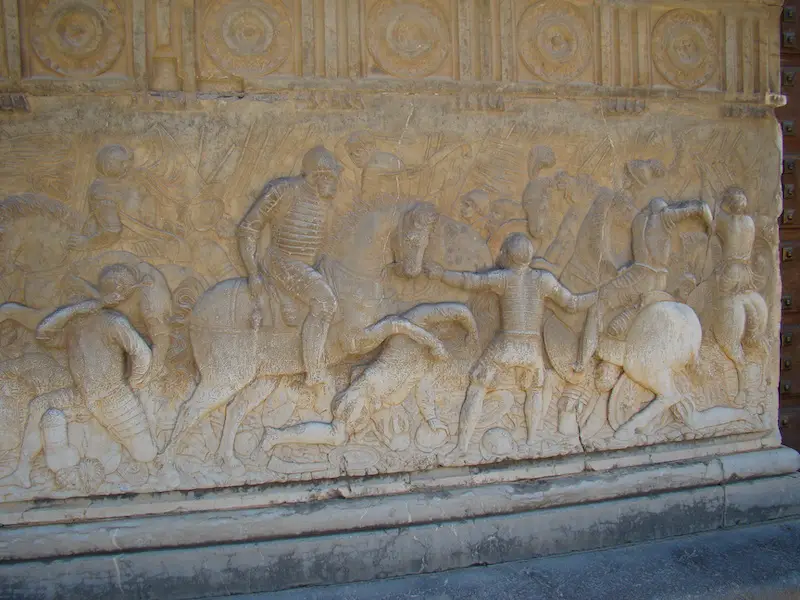
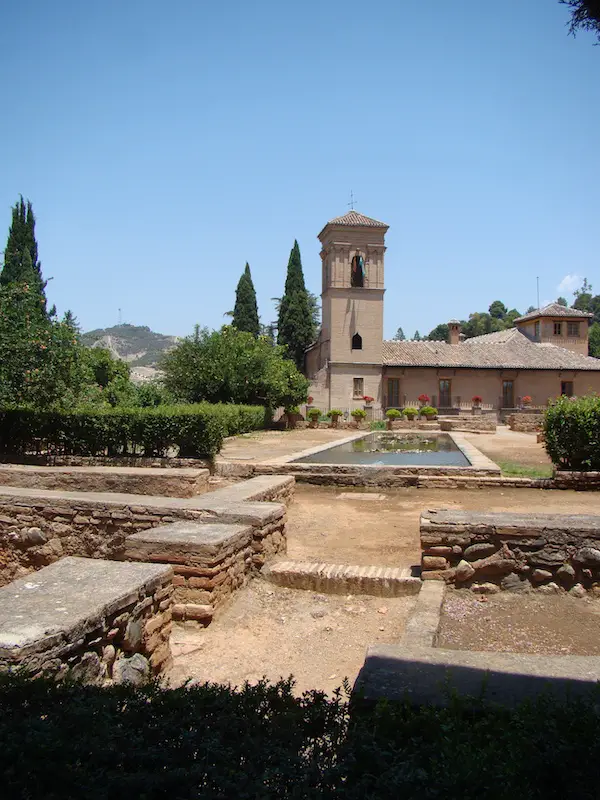
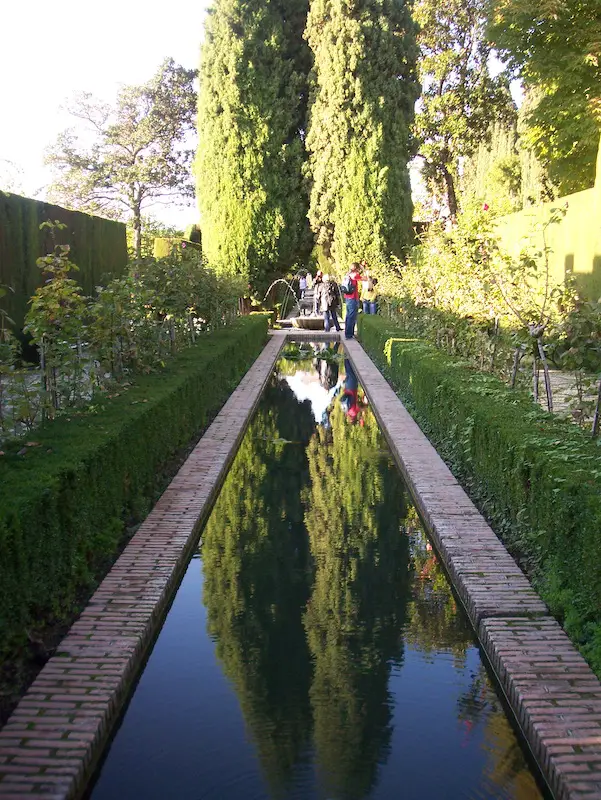
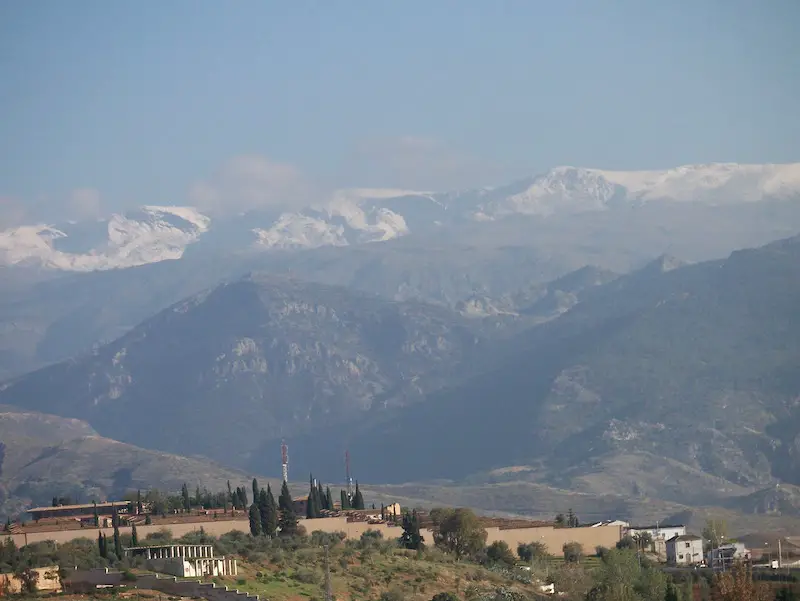
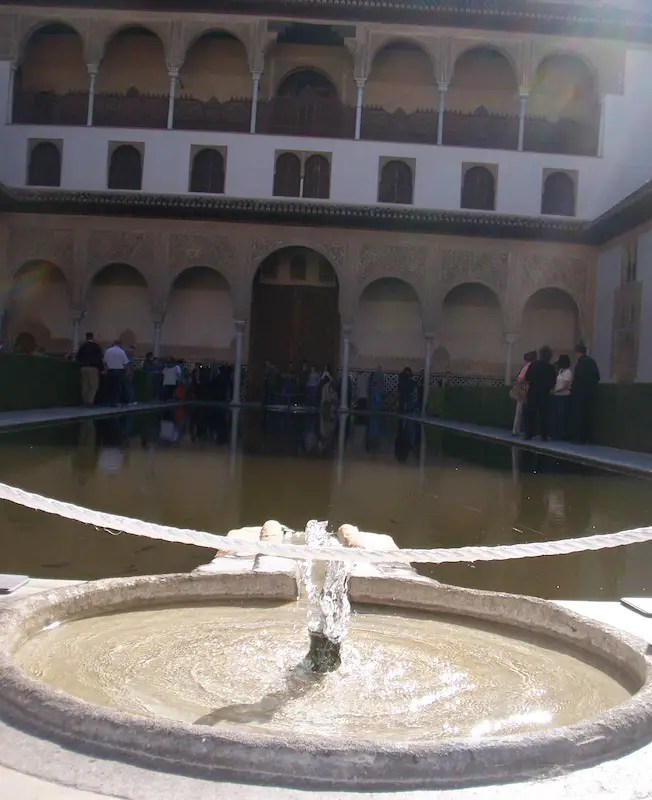
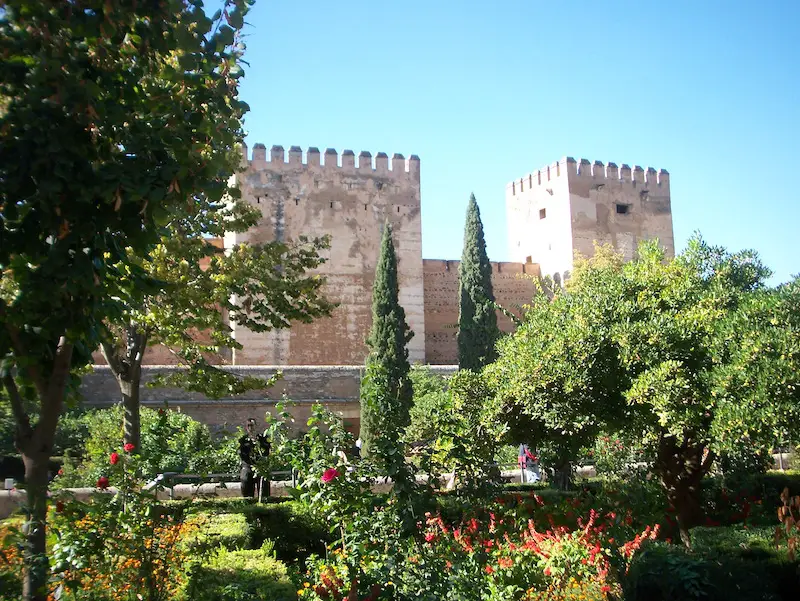
Summary
I’ve visited the Alhambra three times over the years. My first visit to the Alhambra was when I was a senior in high school. We took a formal tour with my Spanish class and I immediately fell in love with the architecture and views. One of my most memorable experiences was watching a flamenco show after!
My second visit to the Alhambra was when I studied abroad in Spain. I was living in Cadiz, and my program arranged a weekend tour of Granada. Once again, I was completely mesmerized by the beauty of the gardens and the architecture.
My last trip to the Alhambra was with my brother. It was his first time visiting Spain, so I knew I had to take him to see the Alhambra. He was just as impressed as I was, and I was delighted to return to the Alhambra!
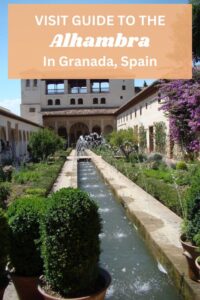
Disclaimer: We always strive for content accuracy. Since the time of publishing, travel-related information regarding pricing, schedules, and hours may have changed. Please look up such information directly from each vendor or institution for the most current information.

